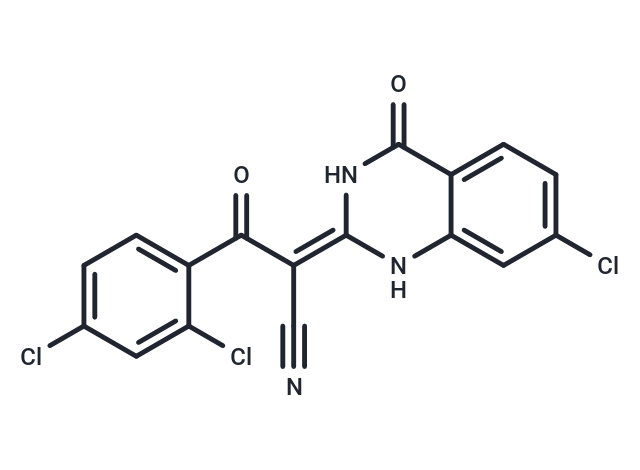Shopping Cart
- Remove All
 Your shopping cart is currently empty
Your shopping cart is currently empty

Ciliobrevin D is a AAA+ ATPase motor cytoplasmic dynein inhibitor. Ciliobrevin D inhibits Hedgehog (Hh) signaling and primary cilia formation and it also inhibits dynein-dependent microtubule gliding and ATPase activity in vitro.

| Pack Size | Price | Availability | Quantity |
|---|---|---|---|
| 1 mg | $58 | In Stock | |
| 2 mg | $84 | In Stock | |
| 5 mg | $143 | In Stock | |
| 10 mg | $226 | In Stock | |
| 25 mg | $446 | In Stock | |
| 50 mg | $657 | In Stock | |
| 100 mg | $918 | In Stock | |
| 1 mL x 10 mM (in DMSO) | $159 | In Stock |
| Description | Ciliobrevin D is a AAA+ ATPase motor cytoplasmic dynein inhibitor. Ciliobrevin D inhibits Hedgehog (Hh) signaling and primary cilia formation and it also inhibits dynein-dependent microtubule gliding and ATPase activity in vitro. |
| In vitro | Ciliobrevin D reversibly inhibits melanosome aggregation, however, the non-cilia-disrupting derivative had no discernible effect at comparable doses. Cells treated with Ciliobrevin D exhibits abnormal (unfocused, multipolar, or collapsed) spindles with disrupted γ-tubulin localization in NIH-3T3 cells. Ciliobrevin D addition also reversibly disrupts the pre-formed spindles of metaphase-arrested cells and reduces overall microtubule levels and it similarly abrogates the movement of peroxisomes in Drosophila S2 cells[1]. |
| In vivo | In the testis in vivo, Knockdown of Dync1h1 or inactivation of dynein 1 by Ciliobrevin D perturbs spermatogenesis. The use of Ciliobrevin D to inactivate dynein 1 in the testis in vivo perturbs MT organization through changes in the spatial expression of EB1, perturbs F-actin organization, and perturbs distribution of adhesion protein complexes at the BTB, leading to a loss of BTB integrity[3]. |
| Molecular Weight | 392.62 |
| Formula | C17H8Cl3N3O2 |
| Cas No. | 1370554-01-0 |
| Smiles | Clc1ccc(C(=O)C(\C#N)=C2/NC(=O)c3ccc(Cl)cc3N2)c(Cl)c1 |
| Relative Density. | 1.537 g/cm3 (Predicted) |
| Storage | Powder: -20°C for 3 years | In solvent: -80°C for 1 year | Shipping with blue ice. | ||||||||||||||||||||
| Solubility Information | DMSO: 5 mg/mL (12.73 mM), Sonication and heating to 80℃ are recommended. | ||||||||||||||||||||
Solution Preparation Table | |||||||||||||||||||||
DMSO
| |||||||||||||||||||||

Copyright © 2015-2025 TargetMol Chemicals Inc. All Rights Reserved.